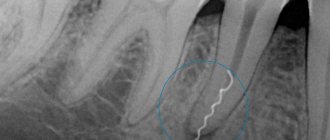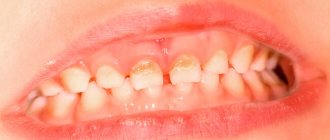Fillings made from a material such as a chemical composite mimic and replace natural tissue lost due to disease, subsequent treatment, or injury. Dentists use them to fill large cavities, including teeth with removed pulp. They are affordable and have excellent durability characteristics. Restoration using them will ensure full restoration of chewing function, and this despite the fact that it will serve for a long time!
Therapists at the CELT Dentistry Department widely use composite fillings to restore dental tissue. They have modern materials at their disposal, which, along with precise adherence to technology, make it possible to obtain beautiful, functional and durable restorations. Treatment is carried out on the basis of a contract with a guarantee. You can find out the cost of composite fillings in the price list by going to the “Services and prices” tab. Despite the fact that we regularly update it, we recommend that you check the numbers by contacting our information line operators or visiting a doctor.
Consultation with a dentist-therapist - 1,000 rubles.
Filling made of chemically cured composite—RUB 1,500.
At CELT you can get advice from a dental specialist.
- The cost of a consultation with a dentist-therapist is 1,000
Make an appointment
Types of fillings made of chemically cured composite
Chemical composite materials began to be used in dentistry in the 60s of the last century. Fillings made from it are called ordinary or cement. Their distinctive feature is that they crystallize due to a chemical reaction, which is launched during the process of mixing their components. They themselves are very durable, which can be called both an advantage and a disadvantage. The fact is that their hardness exceeds the hardness of dental tissues, which is why they wear out and the tooth itself is destroyed.
| Types of cement fillings | |
| View | Distinctive features |
| Composite | It includes several components, is characterized by uniform hardening, and lasts about twenty-four months. After hardening, its color may differ from the color of the enamel, so it is best to place it where it will not be visible (on the molar). |
| Glass ionomer | Manufacturing occurs by mixing an aqueous solution of polyacrylic acid and aluminofluorosilicate glass powder. The crystallization effect is achieved through an acid reaction. |
Grinding and polishing of teeth
The last stage in the treatment of caries is adjusting the new filling to the bite, giving it shine and final alignment. Doctors often use pieces of carbon paper and ask the patient to lightly press the colored piece of paper with his teeth. Based on the spots that appear on the surface, the doctor sees where the extra protrusions are located and polishes them so as not to create unnecessary tension in the jaws when closing the teeth.
You should not endure the resulting discomfort and hope that over time you will be able to get used to the disturbing formation. The doctor will remove the excess with a special grinding bur, but the filling will not go anywhere and will remain in the tooth to protect it from caries.
Now anyone can imagine the extensive work a dentist does when treating the most common dental disease on the planet. It is unlikely that the inhabitants of the globe will be able to avoid developing caries even once in their lives, but everyone is quite capable of preventing multiple extensive lesions.
Features and advantages of composite fillings
The price of fillings made from a chemical composite is low: they are among the cheapest available today. This is due to the fact that they are unable to provide a good cosmetic result. At the same time, it is not required when it comes to molars: a darker color will not be a problem, but the structure itself will withstand intense loads during chewing and will last for many years. It contains fluoride, which will prevent the development of caries and destruction of tooth enamel.
Due to its excellent strength characteristics, the average service life of a conventional filling ranges from ten to fifteen years. However, it only depends 60% on the material of manufacture: an important factor in this case is regular and correct oral hygiene measures. Advantages of composite fillings:
- good strength characteristics, hardness;
- long service life;
- low price with simple application;
- high speed of restoration production;
- uniform hardening, regardless of the size and depth of the cavity;
- immunity to the effects of saliva;
- minimal risk of cracking of the filling.
Chemically cured composites are “powder-liquid” or “paste-paste” systems. The rate of their hardening depends on the number of active elements, temperature and the presence of inhibitors. Indications for installing a filling on a tooth made of a chemically cured composite:
- the need to obtain a hard, wear-resistant, durable restoration;
- restoration of a unit with a deep carious cavity;
- restoration of posterior chewing units;
- the patient's request to use budget materials.
Alternatives to a composite filling
Not all cavities can be restored with composite. If a large part of the affected tooth had to be removed, alternative methods are used to restore a beautiful smile, such as dentures, crowns, and implants.
These are restorations made in a dental laboratory using impressions taken. They are usually made from porcelain, but also from gold alloys, composites, or a combination of gold and ceramic, allowing the exact anatomical shape of the tooth to be recreated.
Reviews about our dental therapists
I would like to express my gratitude to the dentist Elena Nikolaevna Kiseleva and her assistant Svetlana - they are real specialists and at the same time sensitive, not burnt out by years of practice.
Thanks to them, I have been coming back here for many years. Thanks to the management for such doctors! Read full review Svetlana Nikolaevna
13.08.2021
Words cannot express my gratitude to Elena Nikolaevna Kiseleva. This is the best doctor in the world. I got an appointment after many years of being ignored by the dentist’s office and with a bitter experience of treatment in another paid clinic, the mistakes of which had to be corrected in the first visits. Thank you for this... Read full review
Roman Stanislavovich Sh
25.07.2020
How much does a filling actually cost?
But now you come to dentistry, and the doctor offers you a choice of several types of light fillings, of which the cheapest can cost (relatively) from 1,500 rubles, the middle price segment - about 3,000 and the most expensive - 5,000 or more... And which one to choose ?
In the dentist’s office there is hardly anyone to ask: the dentist and the clinic, of course, are interested in selling the most expensive product. And usually the patient has to rely on the integrity of the doctor and accept the choice that the dentist himself offers. We want to help you make an informed choice of filling that meets your needs and capabilities.
So, what does the cost of a filling consist of (in this article I consider only the filling, without taking into account the cost of root canal treatment):
1. Qualification: here we record annual additional professional training and courses (all doctors in our dentistry spend from 30,000 to 150,000 rubles for these purposes every year). You have to save from each filling =).
2. Equipment: standard equipment for a dental office to provide the usual range of services costs from 500,000 to 1,500,000, and this does not take into account the cost of equipment for the X-ray room and sterilization room. To place the most ordinary filling without pain and unnecessary injury, you need a high-speed, water-cooled installation.
3. Premises maintenance or operating expenses: this includes licensing, premises rental, insurance, cleaning, assistant, administrator. It is unlikely that it will be possible to calculate correctly, but in the case of our clinic, each patient’s appointment costs at least 1000 rubles, regardless of the service provided, even if it is just a consultation =). If you are from Moscow, then, by the way, you can sign up online.
4. To install a filling, you also need tools of limited use (short service life or disposable) - such as burs, rubber bands, grinding discs, strips, brushes, wedges, matrices, etc. Yes, these “small things” also add up to a decent amount .
5. Cost of a filling : “Well, finally!”, you say. But it’s not that simple... Before announcing the nominal cost of a filling (filling material), I urge you to review the points above again: without them, this price in no way reflects the cost of the work to install the filling. It is also obvious that the amount of material required to treat a particular tooth is always individual. So, we have an aesthetic dentistry clinic and we use only materials in the “above average and premium” price segment. The material that we usually use for the restoration of chewing teeth costs about 5,000 rubles per syringe (about 10 fillings).
It would seem that what prevents you from putting a cheap filling on an expensive material if it is so inexpensive in itself? Probably nothing. Only I don’t know of such examples.
If dentistry or a dentist, or a clinic saves on good equipment, quality of repairs, advanced training and tools, do you really think that they will choose expensive material for you?
Buying expensive filling material yourself is also not an option. Each material has its own properties and you need experience in its use, or advanced training courses, to get high-quality work.
But if the doctor offers several options for fillings to choose from, it is worth choosing, of course, in favor of the more expensive material.
Differences between a filling made from a chemically cured composite and a filling made from a light-cured composite
The “light” filling got its name from the curing method: it occurs under the influence of a UV-radiation polymerization lamp. Thanks to him, the dentist has the opportunity to give it a certain shape as accurately as possible. After hardening, the material adheres as tightly as possible to the native dental tissues, without differing from them in color. For this reason, such structures are most often used on frontal teeth. Their service life is about five years.
| Differences between regular and “light” fillings | ||
| Parameter | Regular | "Light" |
| Polymerization method | As a result of starting a chemical reaction when mixing components | Under the influence of light emitted by an ultraviolet lamp |
| Application area | Premolars and molars | Smile zone teeth |
| Comfort of treatment | Preparation is a cause of discomfort | Minimal preparation |
| Price | Available | Higher |
| Material toxicity | May release toxins | Non-toxic |
| Color | As it hardens, it becomes darker in color. | Possibility of selection in accordance with the color of the native enamel |
Isolation of tooth from saliva
Skipping this stage or performing it poorly leads to the fact that the filling quickly peels off with the formation of cracks, where pathogenic plaque subsequently becomes clogged.
Sometimes a piece of material simply falls out of the hole, and the filling has to be reinstalled. It is extremely important to prevent moisture from entering the tooth tissues prepared for filling, so doctors cover the patient’s salivary glands with cotton swabs and turn on the air dryer. Unfortunately, such measures are already considered outdated. Even the patient’s breath, filled with moisture, can cause water molecules to settle on the surgical field.
Over the past ten years, dentists have been using rubber dams to isolate teeth. This is a specially designed latex protection that is placed over the tooth being prepared with a scarf. As a result, it sticks out, and the oral cavity is completely covered with a thin layer of synthetic fabric. The rubber dam is attached to the necks of adjacent teeth with special metal clasps, this prevents the latex sheet from slipping when the dentist is working.
The rubber dam perfectly isolates the drilled tooth from any moisture in the oral cavity. But installing the material requires skill and is considered a rather labor-intensive procedure. However, asking the doctor whether he uses a rubber dam during treatment will allow the patient to understand how sensitive the dentist is to the results of his own work and the quality of the filling.
What determines the price of a chemical composite filling?
The cost of installation is calculated by the dentist after examination and diagnosis. It depends on:
- the degree of tooth decay and the need to use additional means (for example, linings for caries);
- area of location of the affected dental unit;
- pricing policy of the dental clinic and the level of qualification of the dentist.
You can make an appointment with CELT dentists online or by contacting our information line operators.
Make an appointment through the application or by calling +7 +7 We work every day:
- Monday—Friday: 8.00—20.00
- Saturday: 8.00–18.00
- Sunday is a day off
The nearest metro and MCC stations to the clinic:
- Highway of Enthusiasts or Perovo
- Partisan
- Enthusiast Highway
Driving directions











